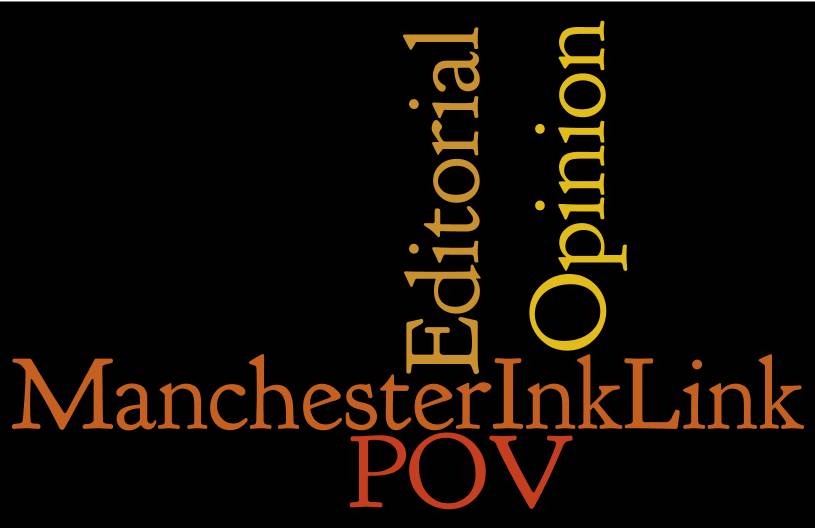
For a large portion of my teenage years and time pursuing my undergraduate degree, I elected to take several courses covering the history of the Holocaust. I’ve studied contemporary German history, a history of the world’s genocides and specifically the Holocaust during World War II, orchestrated by the Nazi party of the Third Reich. Numerous personal accounts, novels and courses pale in comparison to the feeling you are overcome with when standing at the gates of the concentration camps in the flesh.
I began my two-week trek throughout Europe in Munich, Germany. Today, Germany is the booming economic force behind the European Union; nation rich with culture and pride from its people. Still, in the shadows of the small towns and rural areas, concentration camps remain visible to the public; standing as a testament to this nation’s darkest hour.
Dachau concentration camp was opened as early as 1933. It was the first concentration camp opened by the Nazi Party and was used as the model for other concentration camps to follow. Its initial purpose was to imprison political opponents of the Third Reich. By 1935, Jehova’s Witnesses, homosexuals, Roma and Sinti (European gypsies), Catholic priests and Jews were being sent to Dachau as well. The camp remained open until liberation in April of 1945 by the United States Army. Over 31,000 people fell victim to unspeakable horrors inflicted at the camp during this time.

Today, Dachau Concentration Camp stands as a memorial for those 31,000 who perished. The truly somber experience begins at the gates of the jourhaus, which is the entryway into the camp. Prisoners arrived in masses here by means of cattle cars. I paused as I walked through the jourhaus when I saw the infamous gate leading into the camp. The description: Arbeit Macht Frei (“work makes you free.”) In personal accounts, many prisoners described this very entryway as the gateway to hell on Earth.
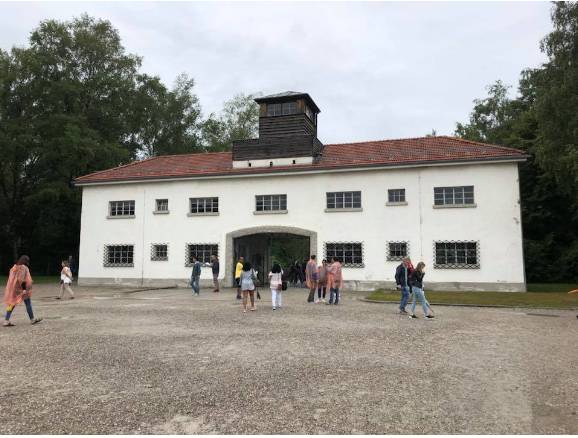
Walking through the courtyard was somber and quiet. Here, daily roll call was handled by Hitler’s soldiers, commonly known as the SS –– for Schutzstaffel. The courtyard is still lined with barbed wire fences and several watchtowers where the Nazis would oversee the camp at all times. While some of these buildings had been reconstructed for visitors, much of the original camp still stands intact. The barracks where prisoners slept were alarmingly uncomfortable. Tight rows of wooden slats were reconstructed to show how the prisoners were housed. If they were lucky, they had a thin mat of straw but typically slept on the exposed wood. Disease, starvation, and complete lack of sanitation killed thousands of people.
Entering the courtyard once more, I walked across the way to another building which had a similar style to the barracks: long and narrow with dark rectangular slats for windows. This building was made of concrete rather than wood, and was used as the inmate cells for prisoners who were to be punished. Defiant prisoners were sent to these bunkers for harsher conditions and torture, which usually led to their murder. Prisoners kept here were often isolated from others in the camp. Today, visitors can listen to accounts from survivors on audio. I listened to one account from the bunker on audio which was told by a witness. This witness saw a defiant prisoner locked in a room so tiny that he had no choice but to stand at all times. The prisoner was barely kept alive but locked in the room for two weeks. At the end of the second week, the guards opened the door and told the man to walk, in response to which he simply fell to the ground.

An international monument was added to the courtyard in the late 1960s by Yugoslavian artist and holocaust survivor, Nandor Glid. Many translations were present on the monument. In English: “May the example of those who were exterminated here between 1933 and 1945 because they resisted Nazism unite the living in their defense of peace and freedom and in respect for their fellow men.”
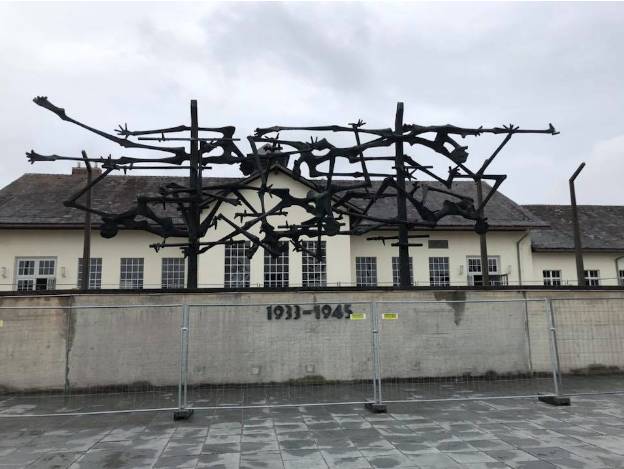
A work of art stands not far behind this inscription; from a distance, it appears to be some sort of tangled scrap metal. As the visitor walks closer, you can see the artwork is meant to depict charred bodies tangled and hanging from barbed wire. Next to this piece, another inscription in several languages reads “Never Again,” with the ashes of unknown victims.

The last piece of dedicated art is a sculpture resembling three links in a chain. On this chain, you’ll find several triangles of various colors. These colored triangles were used to define the prisoners for their existence in the camp. Red for communists and political prisoners, blue for Poles and foreign workers, pink for homosexuals and the yellow double triangles or the Star of David for the Jews. In all my life, I have never witnessed a series of art that bears so much heavy emotion than from these pieces.

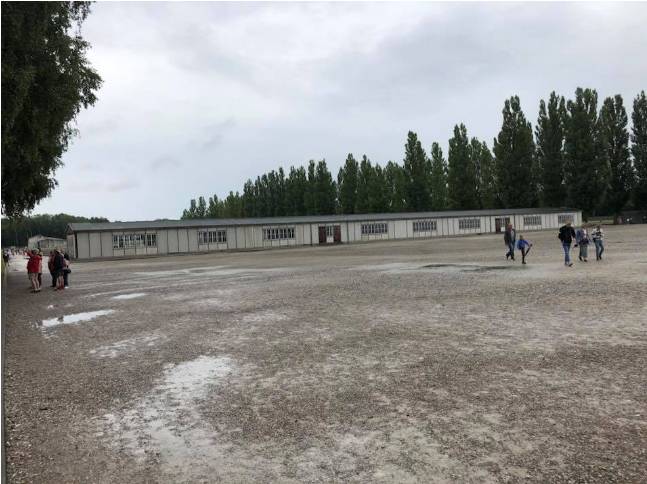
Moving away from the courtyard, I found a long road, now paved with just gravel. At the end of the war the Nazis attempted to destroy most of the camps in order to hide the evidence of their crimes. Fortunately, enough evidence still existed to help identify the purposes of each section of the camp. Down the long gravel road, rectangular bases were still kept to mark where the barracks were kept with individual purposes and numbers. For example, a medical barrack was kept for the purpose of sick inmates. However, many of the inmates lacked actual treatment and were instead sent to the “medical” barrack to die or face medical experimentation.
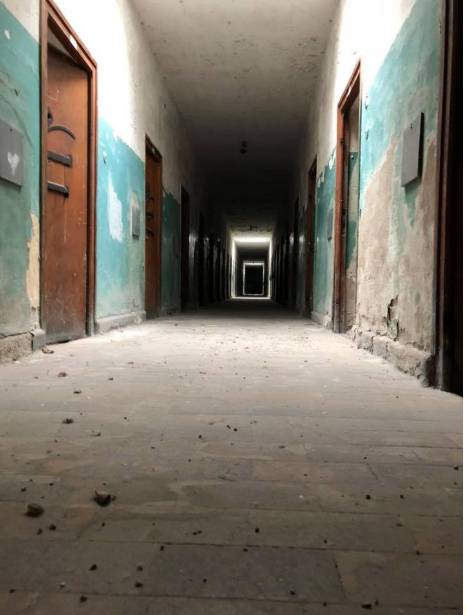
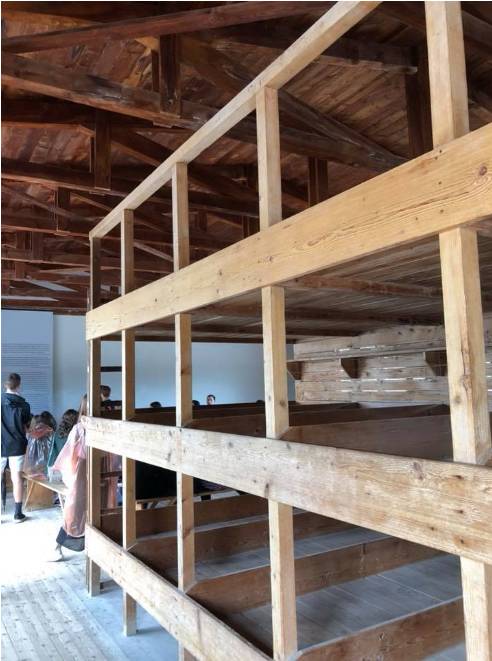

As I reached the end of the road, I came to one of the last and most truly horrific sights in the camp. The gas chamber and crematorium. This tiny and concealed building was kept out of plain sight in a secluded part of the camp. As I entered this building, many other tourists could be seen leaving the area with tears in their eyes and grief-stricken faces. Although Dachau was classified as a concentration camp as opposed to an extermination camp (such as Treblinka, Belzec and Auschwitz-Birkenau,) a gas chamber was still present at this camp. On one end of the crematorium, there is a tiny room that appears to be a waiting room. Here the prisoners waited for what they were told was going to be a shower. The door from the waiting room led directly into a square room that resembled a cellar. Even as just a tourist, I will never forget the feeling of anxiety and claustrophobia that I had when standing in the gas chamber. The roof was still lined with the holes resembling fans or shower heads where the toxic Zyklon B gas was dropped into the room, killing everyone inside in a matter of minutes.

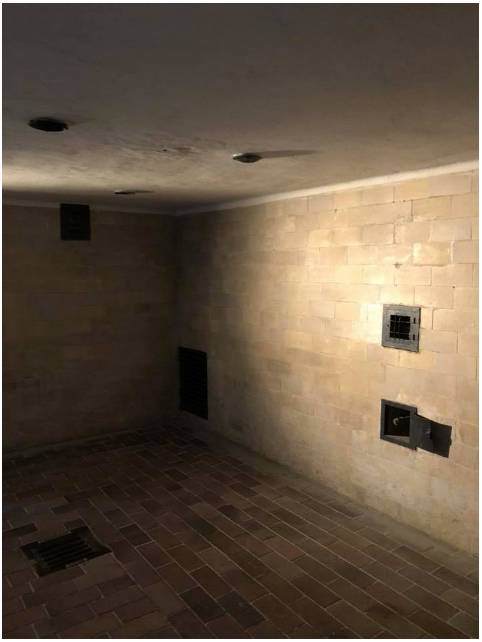
The last portion of this building was the crematorium. Here the bodies were burned after being gassed. This chamber resembled a brick oven with metal stretchers to place the bodies on. One lengthy chimney can be seen protruding from this relatively small brick building. It should be noted that so many people died of causes other than the gas chambers, that the crematoriums were in operation almost all day and night. Upon liberation, American troops came across bodies stacked up that had not yet made it to the crematorium.
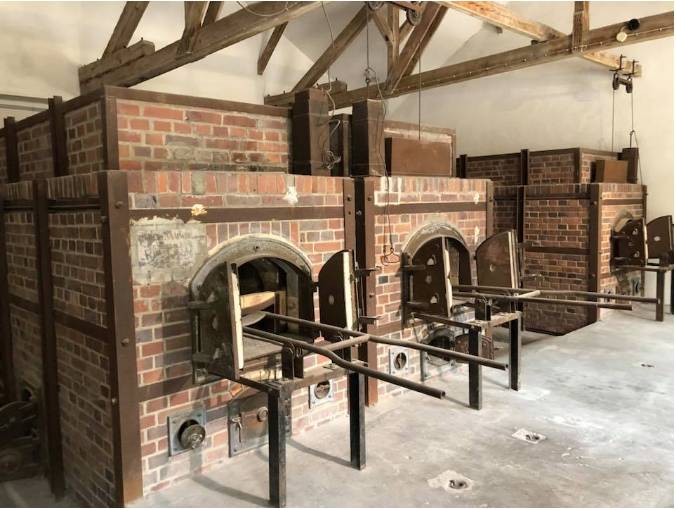

Around the time of liberation, many people living in towns near the concentration camps would claim ignorance to what was occurring inside the walls of these camps. I can’t imagine this to be feasibly true, but time has shown that it’s sadly easier to be a silent bystander than a vocal opponent.
For me, the only emotional solace that I could find within the camps was from the beautiful religious memorials that have since been erected in tribute to the victims. Areas of prayer can be found for visitors to pay their respects at the following locations within the camp: The Mortal Agony of Christ Chapel, The Carmelite Convent, The Protestant Church of Reconciliation, The Jewish Memorial and the Russian-Orthodox Chapel. I will not pretend to claim to be an incredibly devout Christian. I was raised Catholic and for a time had strayed away from the church. But on this day, I found myself inside the Mortal Agony of Christ Chapel saying a prayer.
By the end of the day my head was swirling with thoughts of reflection and sadness. While roughly 31,000 people died in Dachau, about 6 million Jews were murdered in an act of genocide during World War II – mothers, fathers, children, friends. I find myself wondering what kind of potential was stolen from these people? Could they have gone on to be educators, artists, doctors or scientists? We must never allow ourselves to think: “It could never happen here.” This mentality has been proven wrong time and time again. Rwanda, Bosnia, Cambodia – all of these countries have experienced a form of genocide in the last 50 years. We must continue to educate future generations as the older will no longer be present to tell their tales. We must never forget the human atrocities and darkness that occurred in times prior, and those who fought to restore peace and liberate the oppressed.

Alec Biron reports on food news, pop culture and now his European travels for Manchester Ink Link. He enjoys covering local events and highlighting spots to dine and unwind! Other topics of interest include: education, real estate, and opinion pieces. Alec graduated from Southern New Hampshire University in May of 2017 with his B.S. in Business Administration and currently works in higher education at SNHU. In his spare time he enjoys hiking, reading, running and traveling to new places. You can reach him at alecmb95@gmail.com.







